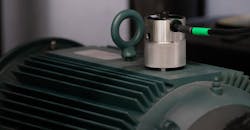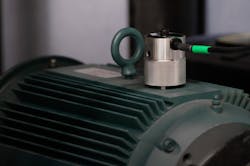Three Misconceptions about Conditioning Monitoring
Condition monitoring is the practice of using various sensors and data analysis to assess the operating state of machines and equipment. For example, temperature and vibration data can be collected using a temperature sensor and accelerometer, respectively, to gather data on an overhung fan bearing to assess its condition. Similarly, ultrasonic sensors can be used to determine the need for lubrication in bearings.
Condition monitoring is increasingly being used by factory managers as a way to reduce downtime, keep at peak operating efficiencies, and lower equipment costs. Condition monitoring brings big benefits including streamlined off-site troubleshooting, better machine designs, and stronger customer loyalty over the long term. It can even help lead to a “fleet management” business model, selling an ongoing service such as uptime rather than a one-time capital investment in equipment—sell the drill holes, not the drill bits, as the saying goes. In many cases, the primary obstacles to OEMs reaping these benefits are a few common misconceptions about condition monitoring.
Data plot from the Dynapar OnSite condition monitor shows correlation between three vibrations (black, green, and blue lines) and running speed (orange line).
Misconception #1: Add sensors throughout the machines you build.
The best approach to condition monitoring is to do it strategically. Adding too many sensors costs money, increases complexity and points of failure, and generates vast amounts of data that must be analyzed. Instead of putting a sensor on every bearing in a piece of machinery, for example, assess the machine’s failure history. Talk with customers about their maintenance pain points with the machine (and strengthen that customer relationship at the same time). Identify a handful of likely candidates (components or assemblies with high failure rates) and expand from there and start with a long-term vision of adding more sensors.
Misconception #2: Do real-time continuous condition monitoring on all machines.
The frequency of sensor readings varies from machine to machine, application to application, and even over the course of the year. Although machines with a tendency to quickly develop problems may need to have data captures on a nearly continuous basis, many can be effectively monitored with only daily readings. Set the sensors to trigger alerts if conditions and/or thresholds change and let the engineering team troubleshoot and interface with customers as required.
In most factories, the frequency of sensor readings can be significantly decreased after the start-up period. The focus at start-up is on capturing comprehensive data capture to get a detailed understanding of the machine’s performance over different operating conditions. Factors may include duty cycle, environmental conditions, machine run-in, and even seasonal changes. Understanding what data from healthy machines look like can vary over time. Once you create and fill in a detailed baseline for each machine, however, monitoring frequency can be substantially reduced.
Combining several types of data types can build a more effective understanding of changing operating conditions. For example, adding speed and temperature readings to vibration data lets technicians correlate peaks in vibration with running conditions and identify critical issues from false positives.
Not all captured data must be viewed by the OEM. Automated analysis and triggers decrease OEM involvement, transforming the system into a silent assistant that only delivers alerts on real problems. Here, too, thresholds must provide enough lead time to service the machine on a convenient schedule.
A motor is “watched” by an OnSite Condition Monitor from Dynapar that includes a tri-axial accelerometer and temperature sensor.
Misconception #3: Condition monitoring is just for end-users and operators, not machine builders.
Condition monitoring can provide valuable engineering insights for OEMs and equipment vendors. There are a number of possible use, including:
- Component testing and acceptance: Condition monitoring on an engine, for example, can detect anomalies in vibration data that might indicate a manufacturing problem. Conversely, motor rebuilders could use condition monitoring data to determine if a motor or encoder has a defective bearing or the problem lies elsewhere.
- Machine commissioning: Vibration data captured during commissioning can detect misalignments that eventually lead to premature failure or failure to meet performance specifications.
- Root-cause of failure: Data harvested across dozens of machines over several years can be mined to better understand weak points and problems when it comes time to redesign the machine. At a component level, beta versions of motors and encoders, for example, can be shipped with sensors preinstalled to provide a better understanding of equipment performance under real operating conditions.
Condition monitoring doesn’t require factory-wide or machine-wide deployment to deliver useful information. Strategic deployment at a few points is often better. Sensors don’t need to record a constant stream of data. In many instances, sampling only once per day is quite effective.
Perhaps most important, condition monitoring doesn’t just provide benefits for machine owners. Machine builders and OEMs can use the technology to build better equipment and even transition to a more efficient business model, augmenting the business with a new revenue stream.
Abhishek Jadhav is a product manager at Dynapar Corp. For more information on condition monitoring, call (847) 782-5231 or visit www.dynapar.com.



